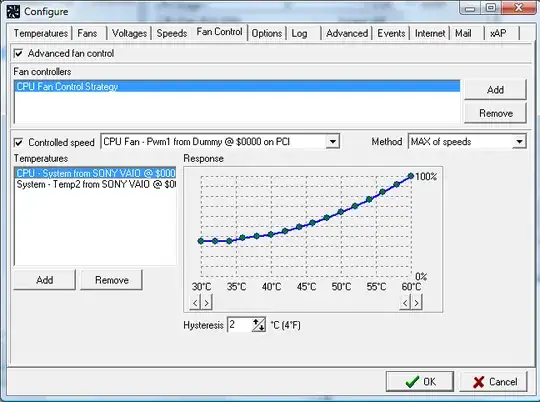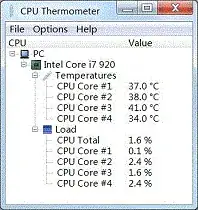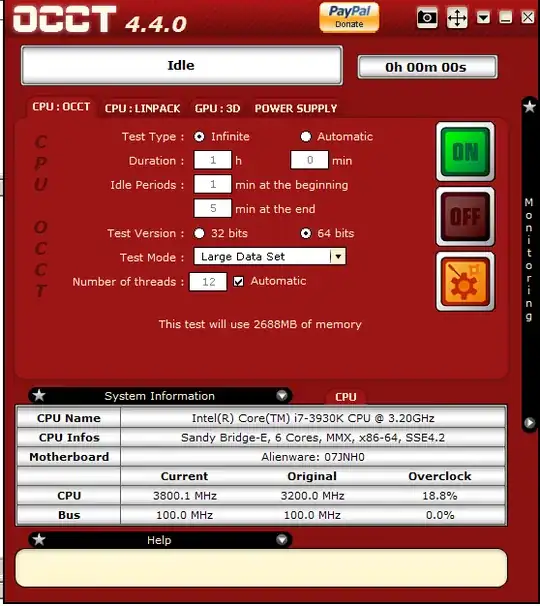I would like to monitor the temperature of the computer's components and also the fan speed. How can I do this?
10 Answers
Speedfan does all that.

SpeedFan is software that can read temperatures, voltages and fan speeds of computer components. It can change computer fan speeds depending on the temperature of various components. The program can display system variables as a chart and as an indicator in the system tray. Fully configurable user events can be defined to execute specific actions based on system status. As of version 4.37, temperatures in the event section must be specified in °C no matter if the display setting is for °F.
CPUID's HWMonitor works great for me. Unlike SpeedFan, it has no problems detecting my GPU, and presents information in a more useful manner, including displaying sensor and device names instead of "Temp1", "Temp2", "HDD1", etc.

What is HWMonitor
HWMonitor is a hardware monitoring program that reads PC systems main health sensors : voltages, temperatures, fans speed. The program handles the most common sensor chips, like ITE® IT87 series, most Winbond® ICs, and others. In addition, it can read modern CPUs on-die core thermal sensors, as well has hard drives temperature via S.M.A.R.T, and video card GPU temperature.
Special hardware monitors such as abit® uGuru and Gigabyte® ODIN™ power supplies serie are supported too.
- 89,072
- 65
- 269
- 311
- 943
Speccy will give you detailed statistics on every piece of hardware in your computer. Including CPU, Motherboard, RAM, Graphics Cards, Hard Disks, Optical Drives, Audio support. Additionally Speccy adds the temperatures of your different components, so you can easily see if there's a problem!

Motherboard Monitor is a free app that has lots of tools including Temps, fan speed and core voltage. It is a slight pain to configure correctly, but otherwise a great tool.

It looks like MBM is a dead project though (last update was in 2006) in which case, Wikipedia suggests Speedfan and CoreTemp
- 89,072
- 65
- 269
- 311
- 1,899
I prefer MBM5. Here's a good link for information on it: http://www.thetechrepository.com/showthread.php?t=74

- 89,072
- 65
- 269
- 311
- 2,603
Notebook Hardware Control is a powerful program. It comes with a script language to control fan speed.
You need a bit of effort to learn it but it has a programmable API.

- 19,080
- 1,962
I suggest http://www.cputhermometer.com/ It's free, small and shows temperature in the tray.

- 62,374
- 1,931
OCCT is really good too: CPU/GPU/Fan speed/etc., and also has some useful tests to analyze the temperature and fan speed when CPU or GPU is under max utilization. Free for personal use.



- 24,246
- 64
- 231
- 400
This might help you out:
No software needed, only a single piece of hardware! I have been using a thermistor for quite some time and it really works fantastic.
Controling and measuring a CPU or a GPU temperature is extremely important - especially if you have a laptop overheating problems, or you work on an older computer.
There are some software which you can use, such as:
Speed FAN - Probably the most popular free Windows utility which can display all temperatures in your computer and also let's you control them.
TP Fan Control - Another popular utility which can show you information about temperatures inside of your computer/laptop. Also comes with some special versions for selected laptops/notebooks.
These two above are my favorite CPU fan control software which you can use for free.
When it comes to GPU, I would recommend you use some of the following tools which supports advanced fan control profiles and overclocking capabilities for most graphic cards out there:
MSI Afterburner and
EVGA Precision X
Both tools works for most credit card manufacturers and they works amazingly well if you set them up correctly - and yes, they are all free to use!
- 97